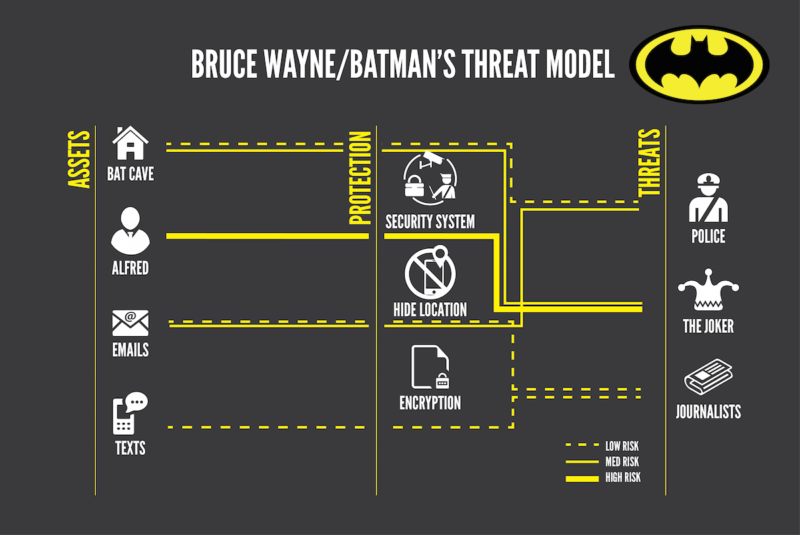
Enlarge / We are not Batman. But you get the idea. (credit: Tiffany Liu, MIT)
I have a healthy level of paranoia given the territory I inhabit. When you write things about hackers and government agencies and all that, you simply have a higher level of skepticism and caution about what lands in your e-mail inbox or pops up in your Twitter direct messages. But my paranoia is also based on a rational evaluation of what I might encounter in my day-to-day: it’s based on my threat model.
In the most basic sense, threat models are a way of looking at risks in order to identify the most likely threats to your security. And the art of threat modeling today is widespread. Whether you’re a person, an organization, an application, or a network, you likely go through some kind of analytical process to evaluate risk.
Threat modeling is a key part of the practice people in security often refer to as “Opsec.” A portmanteau of military lineage originally meaning “operation security,” Opsec originally referred to the idea of preventing an adversary from piecing together intelligence from bits of sensitive but unclassified information, as wartime posters warned with slogans like “Loose lips might sink ships.” In the Internet age, Opsec has become a much more broadly applicable practice—it’s a way of thinking about security and privacy that transcends any specific technology, tool, or service. By using threat modeling to identify your own particular pile of risks, you can then move to counter the ones that are most likely and most dangerous.